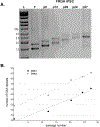Progress in understanding Friedreich's ataxia using human induced pluripotent stem cells
- PMID: 30828501
- PMCID: PMC6392065
- DOI: 10.1080/21678707.2019.1562334
Progress in understanding Friedreich's ataxia using human induced pluripotent stem cells
Abstract
Introduction: Friedreich's ataxia (FRDA) is an autosomal recessive multisystem disease mainly affecting the peripheral and central nervous systems, and heart. FRDA is caused by a GAA repeat expansion in the first intron of the frataxin (FXN) gene, that leads to reduced expression of FXN mRNA and frataxin protein. Neuronal and cardiac cells are primary targets of frataxin deficiency and generating models via differentiation of induced pluripotent stem cells (iPSCs) into these cell types is essential for progress towards developing therapies for FRDA.
Areas covered: This review is focused on modeling FRDA using human iPSCs and various iPSC-differentiated cell types. We emphasized the importance of patient and corrected isogenic cell line pairs to minimize effects caused by biological variability between individuals.
Expert opinion: The versatility of iPSC-derived cellular models of FRDA is advantageous for developing new therapeutic strategies, and rigorous testing in such models will be critical for approval of the first treatment for FRDA. Creating a well-characterized and diverse set of iPSC lines, including appropriate isogenic controls, will facilitate achieving this goal. Also, improvement of differentiation protocols, especially towards proprioceptive sensory neurons and organoid generation, is necessary to utilize the full potential of iPSC technology in the drug discovery process.
Keywords: Friedreich’s ataxia; GAA repeat expansion; differentiation; frataxin; induced pluripotent stem cells.
Conflict of interest statement
Declaration of interest M Napierala is in part supported by CRISPRx Therapeutics Inc. The sponsor had no role or any influence of the content of this manuscript. The authors have no other relevant affiliations or financial involvement with any organization or entity with a financial interest in or financial conflict with the subject matter or materials discussed in the manuscript.
Figures



References
-
- Campuzano V, Montermini L, Molto MD, et al., Friedreich’s ataxia: autosomal recessive disease caused by an intronic GAA triplet repeat expansion. Science 1996;271(5254):1423–7. - PubMed
-
- Durr A, Cossee M, Agid Y, et al., Clinical and genetic abnormalities in patients with Friedreich’s ataxia. N Engl J Med 1996;335(16):1169–75. - PubMed
Grants and funding
LinkOut - more resources
Full Text Sources
Miscellaneous
